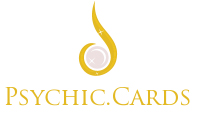When we consider Tarot cards, pictures of tramps, spells, spirits, and precious stone balls ring a bell. While Tarot readings have a remarkable history, the cards themselves just have power in the event that you put your faith in them. A few individuals use Tarot cards each day with a specific end goal, to get the messages for the day. While others place incredible significance in Tarot cards as aides for their lifeway. Perusing Tarot can turn out to be a significant leisure activity if you choose to take that path.
Have you always wanted to learn how to read the Tarot in order to discover what your past, present, and future really mean? While professionals best perform tarot readings, you can still learn how to use the Tarot to answer your everyday questions. Here’s how:
Getting Started
You’ll need your own Tarot deck. If you’re tempted to borrow someone else’s, don’t. This is because the Tarot deck holds the personal energy of the person who uses it, and you don’t want to confuse or mix energies when you are trying to do a personal Tarot reading. When you first purchase your deck, wrap it in a cloth and place it in a box when not in use. You can store them close to your body for a week to absorb your energy. I suggest placing the box you store them in under your pillow.
Asking Questions and Discovering Yourself
Now it’s time for you to start reading your own Tarot cards! Make sure you are in a quiet space away from all distractions of any kind. Concentrate on the questions you want answers to and put all of your energy into your thoughts. Think about your questions and concerns as you shuffle your Tarot cards.
Shuffle the deck as many times as you like. If you are reading Tarot cards for someone else, ask them to ask their question while shuffling the cards and pick their cards from the shuffled deck.
Depending on how many messages you want or need for that specific day (some days require more support), randomly choose a card or cards from the deck. For example, some people choose to use formations such as three cards representing the past, present, and future. On the other hand, many people choose a simple spread of cards which is four in a diamond shape format. When you have chosen your cards, put the rest of the deck to the side.
Reading Your Cards
Now that you have your cards in front of you, you can start reading their meanings and see how they affect your past, present, and future thoughts and feelings. If any of your chosen cards are upside down, they are negative messages, and if your cards are right-side-up, they are positive messages. Reversed cards represent blocked energy—a weaker influence of the card’s meaning and indicate forms of conflict.
Your Tarot card deck most likely came with a handbook with explanations of each card, symbol, etc. Read through each card of your deck and see how it relates to your question of the day. You may find guidance through each card and get in touch with your inner spirit on a whole new level. You can do a reading every day to better understand which path you should take and opportunities that you should be on the lookout for in your life. As you get more comfortable with your Tarot deck, remember the guide book, but learn to trust your intuition in the reading. The message may go deeper than the general guide. Make sure you have a clear question in mind each time you read to make sure the reading is as accurate as possible.


Interesting point about paying attention to card orientation. Reversed cards indicating blocked energy adds another layer of depth to the reading process. This complexity makes Tarot reading seem much more nuanced than I initially thought.
While I’m skeptical about the efficacy of Tarot readings, I find the concept of using them as a tool for self-reflection fascinating. The practice seems like a structured way to explore one’s subconscious thoughts and feelings.
The methodical approach to asking questions and the importance of context in reading the cards offers a useful framework for beginners. The idea of cards providing guidance rather than definitive answers resonates with me.
The suggestion to avoid using someone else’s Tarot deck due to energy confusion is intriguing. It makes sense that personalizing your own deck can create a stronger connection. I’m curious to explore this further.
The detailed explanation of how to start with Tarot readings is quite helpful. I appreciate the emphasis on concentration and personal energy. It seems like a meditative practice as much as a divinatory one.